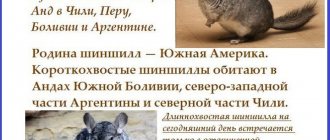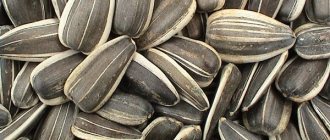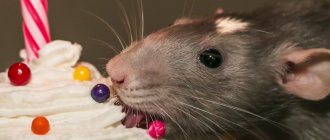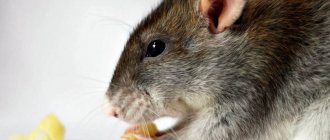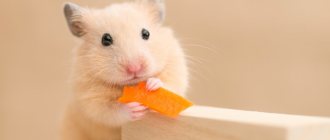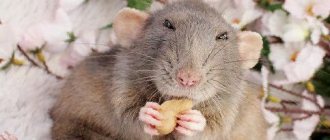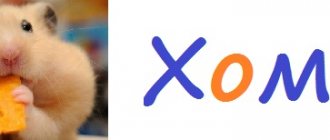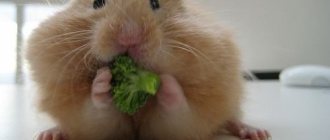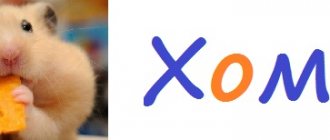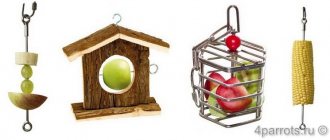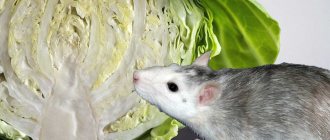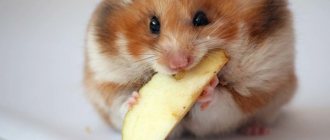Every owner of a decorative rodent is primarily concerned with the question: what do hamsters eat? If you decide to get a furry friend, ask what you can feed him. Small rodents are omnivores and will eat or hide in the pantry everything that catches their eye. Some owners feed their pets what they eat themselves. But this is very harmful for rodents. With such nutrition, the animal will not live long, very soon it will begin to have stomach problems, and everything will end sadly. To prevent this from happening, you need to know what you can feed your hamster, and what it is strictly contraindicated to give it.
What does a rodent eat in nature?
In the wild, the animal’s diet depends on its habitat. These are mainly grain crops, so rodents live, mainly in fields. In drier areas there is more dry food, in wetter areas there is more lush grass, leaves and other greenery. Rodents often raid places where grain, vegetables and other products are stored in rural houses and dachas. Rodents replenish their protein reserves by eating beetles, spiders, worms and caterpillars. They do not disdain the meat of another wounded small animal.
How to choose the right food
Veterinarians are unanimous in their opinion that the basis of the daily menu should be ready-made dry food. Its composition is carefully thought out and balanced in relation to needs; the manufacturer fills the packages with high-quality ingredients. With an abundance of choice, it’s difficult to make a decision, so before purchasing you should focus on some criteria:
- the food must be clean. The more purification steps the factory goes through, the better the product. Plus, it won't create an unpleasant dust cloud when poured into a bowl;
- variety of ingredients. At the same time, an abundance of nuts and starchy components should not be allowed;
- BJU ratio. Proteins make up 14%, fats 7%, and carbohydrates the remaining 79-80%;
- absence of dyes, flavors and other additives;
- sealed packaging. It is better to give preference to bags with a Zip Lock.
Choose food for hamsters; mixtures for parrots, hares and other animals are not suitable.
Another selection criterion: cereal or combined feed. In the first case, only cereals are included in the composition; the owner needs to supplement the diet with fruits, vegetables or plant components. The combined one is much more convenient; it includes everything the pet needs.
What does a hamster eat at home?
The basic rule to follow when feeding your pet: you can give everything that he can find while living in the wild. The more natural products there are in an animal’s diet, the better for it.
The main types of foods to feed your hamster at home.
- Cereals - wheat, oatmeal, buckwheat, barley, corn. They can be given as whole grains, flakes, or as a porridge cooked in water. Sunflower and pumpkin seeds. Legumes, except red beans.
- Vegetables. Raw carrots, zucchini, pumpkin, bell peppers, eggplants, radishes, radishes. You can also give vegetables boiled without adding salt. It is better to lightly boil beets, broccoli, and cauliflower.
- Greenery, grass, tree leaves. Parsley, dill, lettuce, plantain, young nettle, clover. Young tree branches (apple, pear, birch, maple).
- Fruits and berries. Apples, pears, bananas, cherries, cherries, strawberries. They readily eat rose hips and currants. They love dried fruits (raisins, dried apricots, prunes, pieces of dried apples and pears). Occasionally you can give plums, apricots, and grapes. It is better to remove the seeds.
- Dairy products (low-fat and unsweetened kefir, cottage cheese, natural yogurt).
- Eggs, chicken, fish. Twice a week you can give a boiled egg, a piece of boiled lean chicken or boiled fish. Cook without salt and spices.
- It is better to buy bugs, worms and special insects at a pet store. Hamsters love earthworms, but if you dig them up in a flower bed, you can give your pet an infection.
Pet stores sell dry food for hamsters. It contains essential vitamins and minerals. Try different mixtures to find a food that your pet likes. Such pet food companies as Little One and Vitacraft have proven themselves well.
Home cooked food
According to some livestock breeders, their pets participate in joint family meals, eating the same thing as their owners. It’s nice to watch how the hamster “looks closely” at a large plate, but it is advisable that it does not contain dumplings or soup. Sweet and fatty foods are also harmful to rodents.
From home-cooked products, hamsters can be fed cereals cooked in water: rolled oats, buckwheat, millet, lentils. Without any fears, you can feed your pet low-fat cottage cheese, boiled eggs and boiled chicken breast.
Sometimes owners have a desire to pamper their rodent with a cookie, but to prevent such food from harming the pet’s health, only biscuits can be used. And even then, provided that it is unsweetened, unsalted and low-fat. If you really want to see how the hamster will hold the offered food in its paws, it is better to give it whole grain dietary bread without aromatic additives.
How much do pet hamsters eat?
Your pet is a nocturnal animal, you need to remember this. During the day he sleeps, and at night he eats, plays, exercises on a “simulator,” stores supplies, and sharpens his teeth. Therefore, the best option is to feed the baby twice a day. In the evening - the main meal, a hearty breakfast. In the morning, before bed, have a light dinner.
The amount of food that should be given to an animal at one time depends on the type and size of the rodent. When feeding twice a day, the Syrian is given one tablespoon of the feed mixture, and the Djungarian is given one teaspoon. Campbell's hamsters and other dwarf species feed similarly.
He will hide all the food that the hamster does not eat at one time in the pantry “for a rainy day.” Periodically review these supplies and remove perishable foods so that the animal does not get poisoned. Be sure to put something fresh in place of the “seized valuables”. Otherwise, the baby may become seriously stressed because all his reserves have disappeared, and he will die of hunger in the long, cold winter.
Features of feeding a pregnant or lactating woman
During pregnancy and lactation, the female needs additional nutrition; on average, 10 hamsters are born. It takes a lot of effort and energy to feed them, so the usual portion is increased by 1.5 times. There is also an urgent need for protein, which plays a significant role for active growth and development. 2-3 times a week, boiled chicken meat or egg yolk, lean fish are prepared for her, which are given alternately. Low-fat natural cottage cheese is given less often than other products, but it cannot be completely excluded - it is necessary for the formation of the fetal skeleton. For convenience, you can select special days, for example: Tuesday, Thursday and Saturday.
Juice-containing products are given daily, with preference given to carrots, zucchini and pumpkin. It is better to avoid apples during pregnancy and breastfeeding, as they can cause fermentation in the intestines. To actively produce milk, you need to drink plenty of fluids.
How to feed a small hamster
If the pregnancy proceeded calmly, then there is a high probability that in the first weeks the female will independently feed her children, and then she will grind dry food and accustom her to adult food.
The owner must not touch them under any circumstances. Having smelled someone else's scent, she may refuse them, not recognize them as her own, and eat them. If the female does not strive to feed the hamsters with milk, then they are taken into a separate warm hole, and for feeding you can buy a specialized milk formula for kittens at a pet store. Feeding is done from a pipette or using a paint brush dipped in milk.
Upon reaching 2 weeks of age, children's complementary foods include dairy-free oat or buckwheat porridge, low-fat cottage cheese, and an egg. It is also acceptable to give baby meat puree, namely turkey or chicken. At 3 weeks, an adult grain mixture is introduced, having previously ground it. At 6 weeks, nutrition becomes like that of an adult.
How and what do rodents drink?
If there is a large amount of fresh, juicy vegetables, fruits and herbs in the diet, the homa may drink very little or not drink at all. For example, cucumbers are 90% water. However, there should always be fresh water in the cage. The water in the drinking bowl should be changed at least once a day. If debris from the cage gets into the water bowl, the water must be changed immediately so that the animal does not get poisoned. There are several types of special closed drinkers on sale that prevent tipping over and contamination of the water in the container.
What to feed hamsters
If you just bought a pet in a store, take all the contents at once, including a drinking bowl. From food you need to take grain food for hamsters and a mineral stone that does not contain salt.
The grain mixture should be specifically intended for hamsters, and not for birds or other rodents. Do not take drops for rodents: there is too much sugar, the animals do not need it. If the store offers several mixtures, do not take the cheap one. More expensive ones contain the vitamins and minerals your pet needs and are better balanced. If you still decide to take economy class food, buy vitamins for it.
In addition to the dry mixture, it is necessary to feed the animals with succulent food.
What fruits can pets eat?
Fruits that hamsters eat at home should be fresh and ripe, but without rot. It is better if it is local and seasonal fruits. Citrus and various tropical fruits should not be given. The bones must be pulled out so that the baby does not choke. Sour fruits are contraindicated.
If you are training a baby or teaching him, for example, to use a running wheel, you need to stock up on “goodies.” Sunflower seeds or cookies are suitable for this purpose. Sometimes you can feed your baby a banana. But since rodents constantly need to wear down their teeth, they must eat more solid food. In addition, bananas contain a lot of sugar.
Repeat “fruit” days no more than 1-2 times a week.
Vitamin storehouse
Hamsters readily eat vegetables and fruits. And if in the selection of a vegetable diet it is necessary to exclude potatoes, cabbage, onions, garlic and zucchini, then when choosing fruits to replenish the supply of vitamins in the body of the “fluffy”, you must adhere to some rules:
- It is advisable to feed hamsters not with exotic fruits, but with locally grown fruits;
- fruits that are too sour are dangerous for “fluffies”;
- fruits must be selected that are ripe, but without rot;
- Such food should be present in your pet’s diet no more than 1-2 times a week.
In addition, the diet of Djungarian hamsters is somewhat different from how the “Syrians” eat. Dwarf species are more prone to diabetes, so they should prepare fruit dessert less often than Syrian rodents.
The diet of the Djungarians is slightly different from the diet of the Syrians. Dzungarians are prone to diabetes, so they can receive fruit much less frequently than Syrians.
What do little hamsters eat?
If everything is fine with the mother, the cubs usually do not need additional food. But if for some reason the babies are left without a mother or she refuses to feed them, you will have to feed the babies using a pipette or a painting brush. Buy a special formula for newborns at a pet store and dilute it to the consistency of milk. Newborn babies should be fed every two hours, then gently massage their tummies to improve digestion. Small hamsters need to be provided with a bottle of warm water (not higher than +31 °C).
At the age of two weeks, you can already give baby formula (Gerber, Agusha), thin porridge with water and without sugar, crushed cottage cheese, egg yolks and fresh herbs.
From three weeks you can give pureed “adult” food. As a rule, at this age babies can already eat on their own.
Pregnant and lactating hamsters need more protein foods.
Controversial issues or what not to feed a hamster
There are products that cause controversy among animal owners. Is it possible to give milk to animals, how much cheese can you give, and what harm can crackers and bread do?
To answer these questions, we will have to return to the diet of animals in the wild:
- Adult animals do not feed on milk, and the composition of cow's milk is not suitable for young animals. Babies fed bread soaked in milk survive only due to their potential health, and not due to proper feeding.
- You should not feed your pet hamster cheese. It is quite fatty and contains a lot of salt: this will harm the rodent.
- Bread and baked goods are completely inedible for rodents, although they will chew them. There are too many harmful components in the form of fat and sugar in crackers and cookies. If you decide to feed something similar, choose unsweetened dryers. It won't be too useful, but in minimal quantities it won't cause any harm.
List of prohibited products
What is strictly forbidden to feed a hamster:
- spicy, salty, smoked and canned foods;
- any spices;
- citrus and exotic fruits (lemons, oranges, tangerines, grapefruits, avocados, etc.);
- onion garlic;
- cabbage;
- potato;
- watermelon;
- mushrooms;
- sweets.
The list of prohibited herbs includes cereal leaves and dandelion. The sharp serrations on these leaves can injure your hamster's cheeks. Dandelion should not be given because of the milky juice.
What products are allowed and not allowed?
You can find out your hamster's preferences experimentally, but it is important to make the diet as balanced as possible. They are based on grains, cereals and legumes, these can be:
- peas (except canned);
- barley;
- cracked wheat;
- oats;
- lentils.
It is better to exclude corn from the diet due to its high sugar content.
From seeds you can give:
- fresh sunflower seeds (slightly dried, but unsalted);
- melons and watermelon must first be washed and dried;
- pumpkin and squash can be included as an anthelmintic;
- flaxseed and sesame seeds stabilize the gastrointestinal tract, preventing constipation, and they will also make the coat shiny and soft.
Sesame seeds are quite fatty, so they are included in the diet only as a medicine.
Seeds of apples, apricots, peaches, plums, cherries and sour cherries are prohibited.
Nuts are another important component in the diet. However, they should not be overused due to their high fat content. Prohibited:
- almond;
- Brazilian nut;
- acorns.
It is important for the owner to remember that dry pasta, white or rye bread, muesli and ready-made breakfasts should not be given. It is permissible to offer boiled rice only in case of diarrhea.
As a protein component, you can offer low-fat cottage cheese, boiled chicken or eggs, lean fish, dry or fresh insects, which are sold in a pet store.
Be sure to include succulent food: boiled or fresh vegetables and fruits. It is important to take into account that it is strictly forbidden to give exotic and citrus fruits, persimmons and watermelon. Among the prohibited vegetables are: red cabbage, onions, garlic. Potatoes are not recommended due to their high starch content, but sometimes they can be given boiled or raw. In this case, the product must be ripe, young, without pesticides and nitrates. You can offer seasonal sweet berries rich in vitamins; in winter you can replace them with homemade dried fruits.
Hamsters love fresh greens. You can give them lettuce, dandelion leaves, parsley, dill, clover and some types of cabbage, but spicy herbs, wild garlic and sorrel are strictly prohibited.
Branches of fruit and deciduous trees are necessary for sharpening teeth, and coniferous trees are prohibited.
Fresh and clean water is important for hamsters, just as it is for humans. Due to the predominance of “dry” nutrition, it is important to ensure constant access to drink.
Hamster's daily diet
When choosing what to feed your pet, try to ensure that the food is varied, balanced in composition, and contains vitamins.
| You can give | Not recommended | Forbidden |
| Dry food mixtures for hamsters | Food for other animals or birds | |
| Cereals | Rice (can be given only for diarrhea, well boiled beforehand) | Pasta |
| Vegetables (raw or cooked) | Potatoes, cabbage, onions, garlic | |
| Fruits | Watermelons | Citrus fruits, kiwi, mango, persimmon, pineapple |
| Greens: parsley, dill, lettuce, clover, young nettle | Sorrel, lawn grass, strong-smelling herbs and spices | |
| Sunflower, melon, pumpkin seeds | Watermelon seeds | |
| Nuts | Almonds, acorns, apricot and cherry pits | |
| Wheat sprouts, oats, alfalfa | Bread (black and white), muesli, drops for animals | |
| Legumes | Red beans | |
| Homemade dried fruits | Store-bought dried fruits | |
| Leaves and branches of deciduous and fruit trees | Needles, branches of coniferous trees |
Animal protein is necessary for complete nutrition of a rodent. It is found in the following products:
| Can | It is forbidden |
| Boiled lean chicken meat (breast) | Boiled and smoked sausages, frankfurters, sausages, lard, ham, etc. |
| Yogurt and low-fat cottage cheese (1% fat) | Cheese, sour cream, homemade cow and goat milk, butter |
| Chicken and quail eggs | Honey, ice cream, mushrooms, fruit juices |
| Boiled lean fish | |
| Grasshoppers, butterflies, mealworms purchased at a pet store | Earthworms and other worms from a flower bed or summer cottage |
| Gammarus (dry crustaceans), also sold in stores |
Do not overfeed the animal, do not put more food in the feeder than the prescribed amount. Otherwise, your pet will quickly gain excess weight. Better buy him toys and a running wheel so that he moves more and does not suffer from obesity.
If you liked the article, leave a review. Write to us what else you would like to know about your little pets.
Has the hamster already said “thank you” to you?
Knowledge without practice is useless ballast. Right now, tell your family to stop stuffing food into the poor animal all day long. And if your hamster learns to talk, the first thing he will say to you is: “Thank you very much!”
Come back! I'll miss
